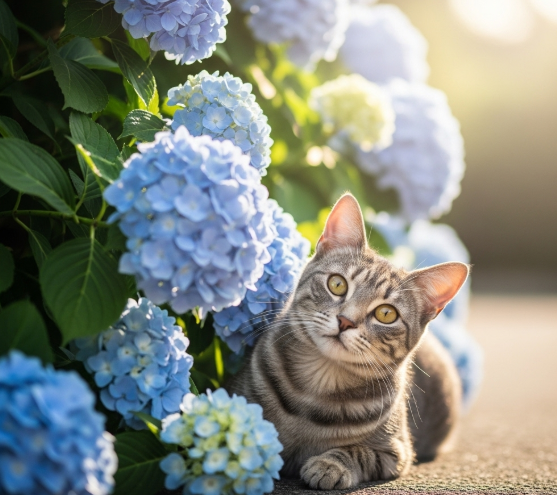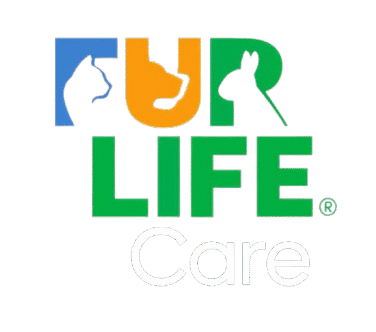
Hydrangeas are beautiful, colorful plants often found in gardens and floral arrangements—but if you’re a cat owner, they could pose a serious risk. While their blooms are eye-catching, all parts of the hydrangea plant can be harmful to cats if ingested. Knowing the risks and how to prevent exposure can help keep your furry friend safe
Why Are Hydrangeas Dangerous to Cats?
Hydrangeas contain natural compounds known as cyanogenic glycosides. When a cat chews or eats part of the plant, these chemicals break down and release cyanide—yes, the same potentially deadly substance. Even small amounts can lead to health issues in cats, making hydrangeas a toxic threat in the home or garden.
There are over 75 species of hydrangeas, and while toxicity levels vary, Bigleaf hydrangeas (Hydrangea macrophylla) are considered the most dangerous. These plants contain higher concentrations of toxins, especially in their vibrant flowers. Ingesting even moderate amounts can cause digestive distress and other symptoms in cats.
Common Signs of Hydrangea Poisoning in Cats
Symptoms of hydrangea poisoning may vary depending on how much was consumed, but watch for:
- Vomiting
- Diarrhea
- Drooling
- Loss of appetite
- Weakness or fatigue
- Depression or lethargy
- Difficulty breathing
- Rapid heart rate
- Seizures
- Pale or bluish gums
If your cat shows any of these signs or you believe they may have eaten part of a hydrangea, contact your veterinarian immediately.
What to Do if Your Cat Eats a Hydrangea
If you catch your cat chewing on a hydrangea, remove them from the area right away and prevent further access to the plant. Call your vet and describe what happened. They may ask you to bring your cat in for evaluation or provide instructions for monitoring symptoms at home.
If possible, bring a sample of the plant to the clinic to help the vet identify the specific type ingested. Do not induce vomiting unless your vet specifically tells you to—doing so without guidance can be harmful.
While there is no specific antidote for hydrangea poisoning, your vet may administer activated charcoal to absorb toxins or provide other supportive treatments to help your cat recover safely.
How to Keep Your Cat Safe from Hydrangeas
To protect your cat from hydrangea poisoning:
- Keep hydrangeas out of reach—on high shelves or behind closed doors.
- Avoid planting hydrangeas in yards where your cat roams freely.
- Choose cat-safe alternatives like spider plants, Boston ferns, or prayer plants for your home or garden.
- Supervise outdoor time, or use a secure “catio” or leash training for safer outdoor access.
- Research pet-safe plants using trusted sources like the ASPCA Plant Database.
Final Thoughts
Hydrangeas might brighten up your home or garden, but they’re best avoided if you have a curious cat. Keeping toxic plants out of reach and knowing the warning signs of poisoning can make a big difference in your pet’s safety and wellbeing.
If you ever suspect your cat has eaten a toxic plant, don’t wait—call your veterinarian or a pet poison control hotline right away.
